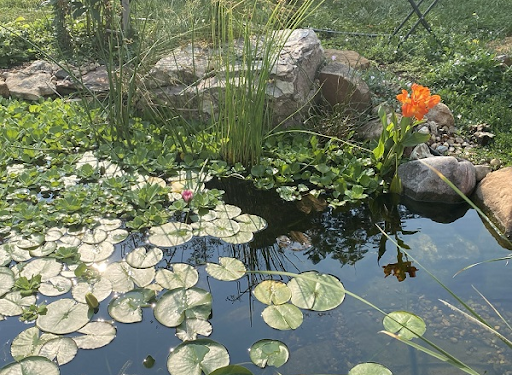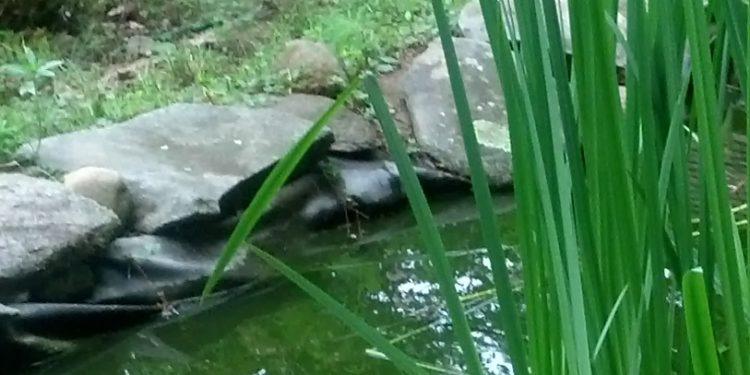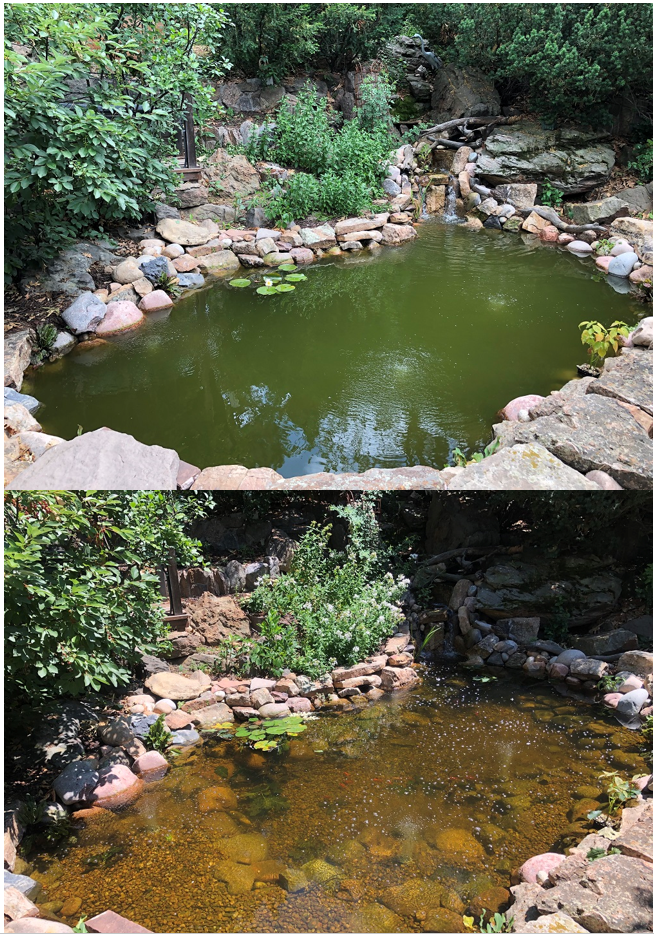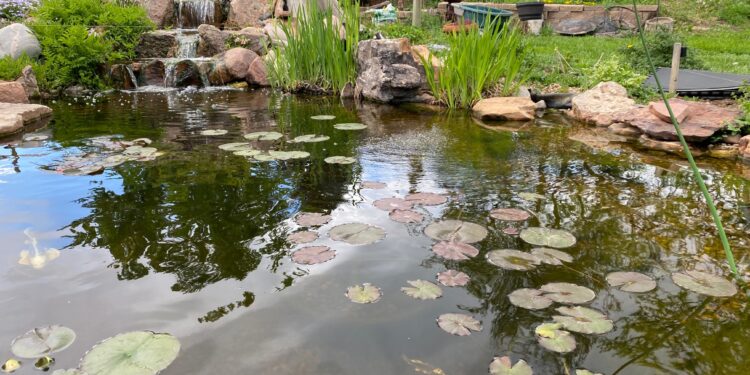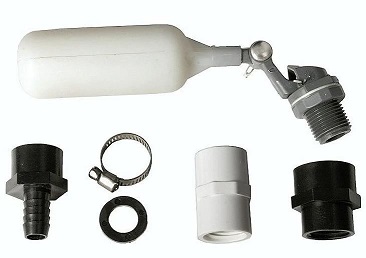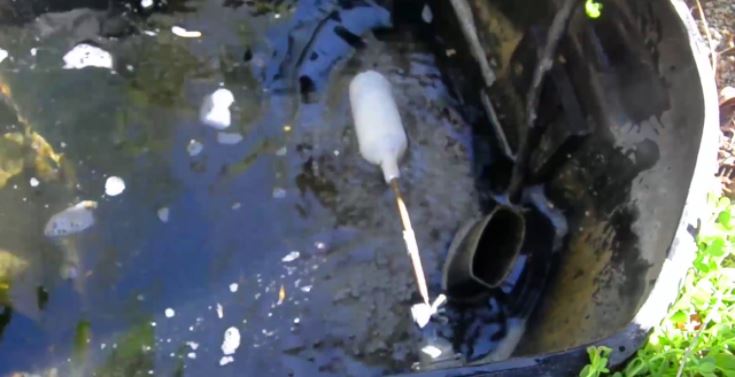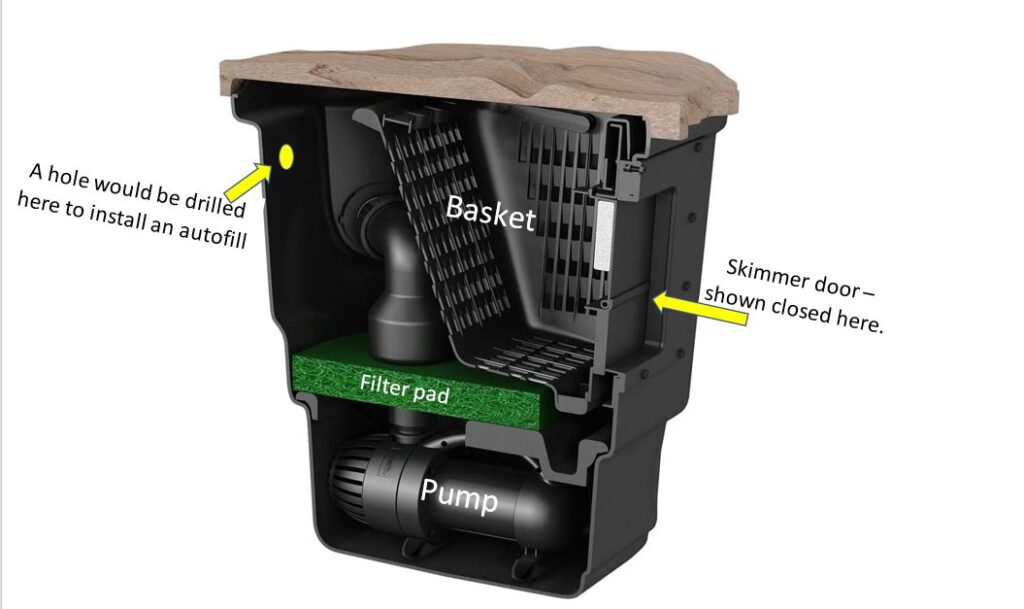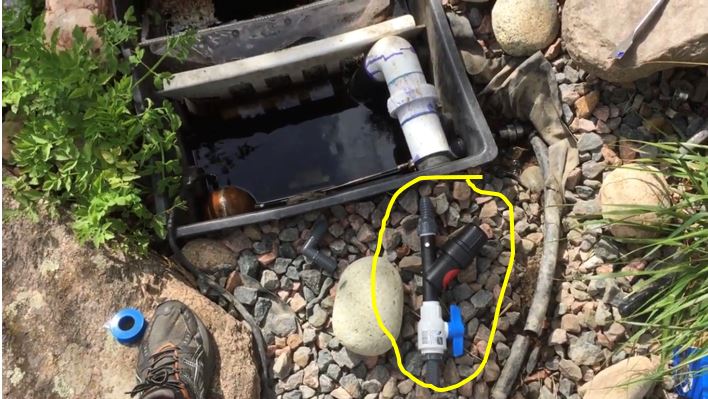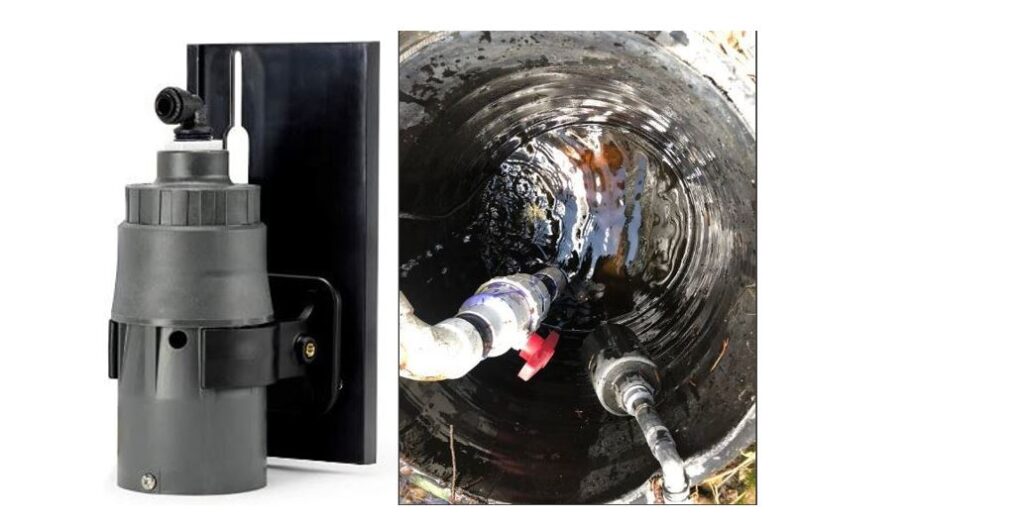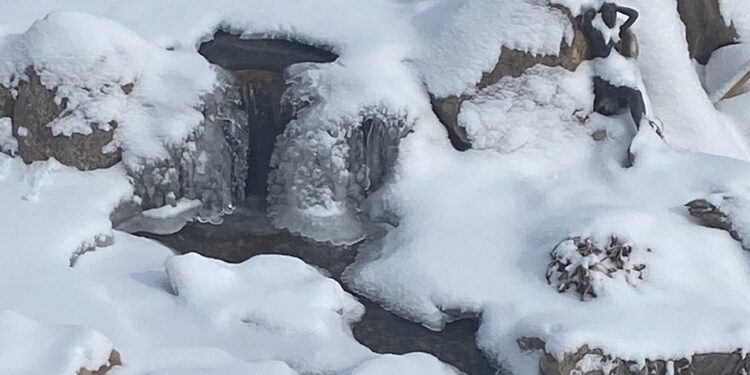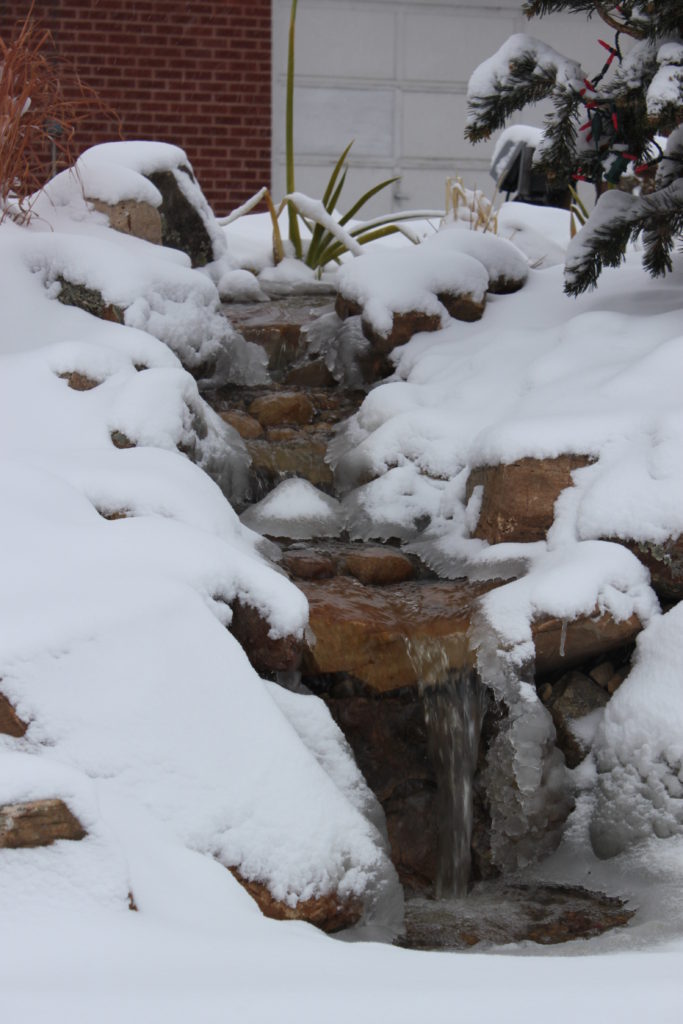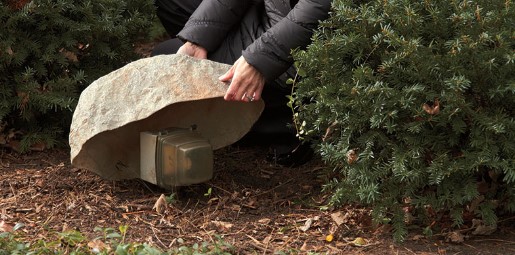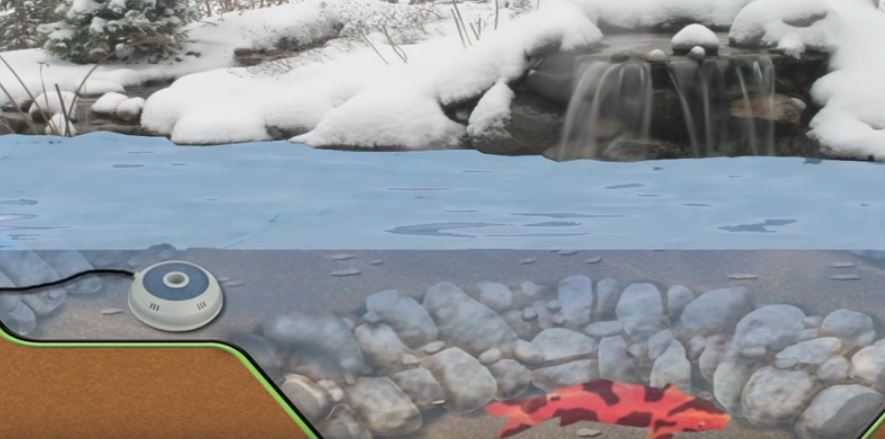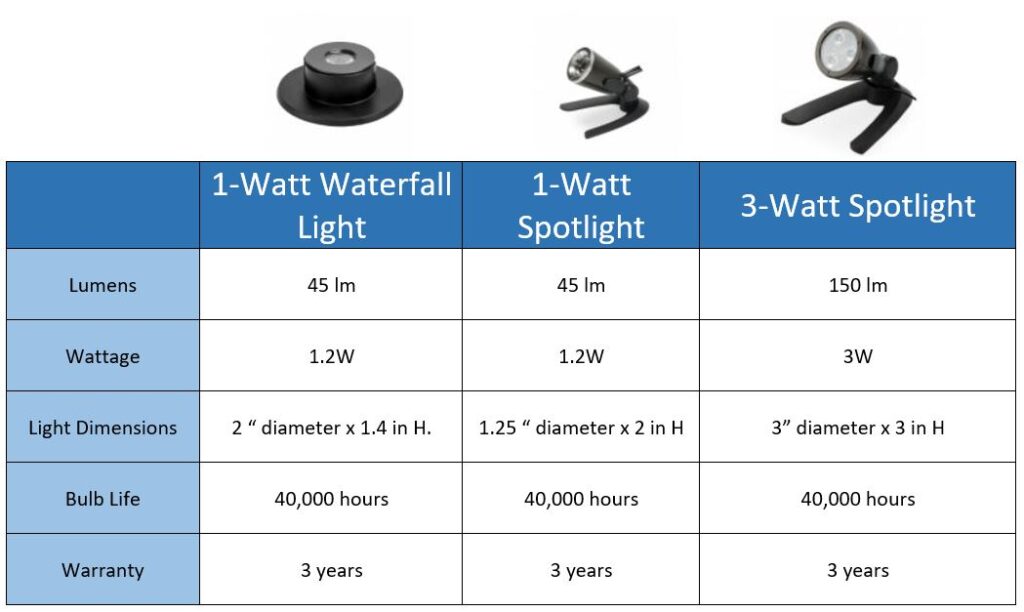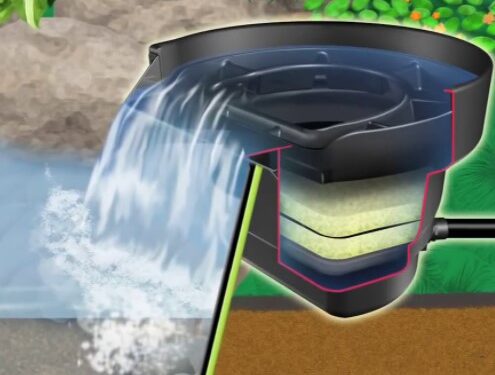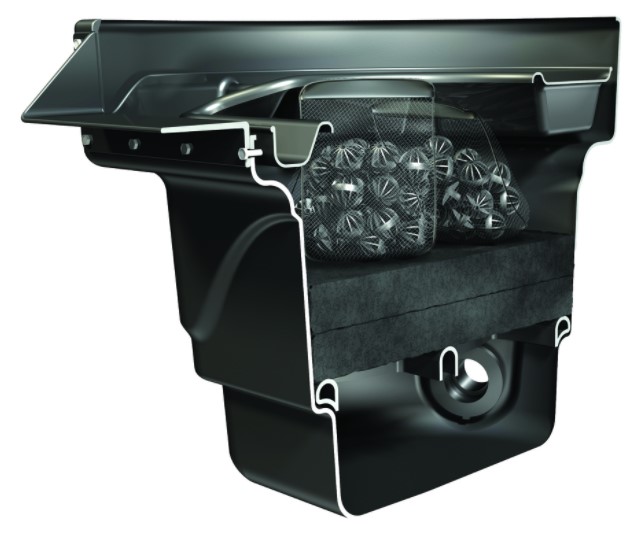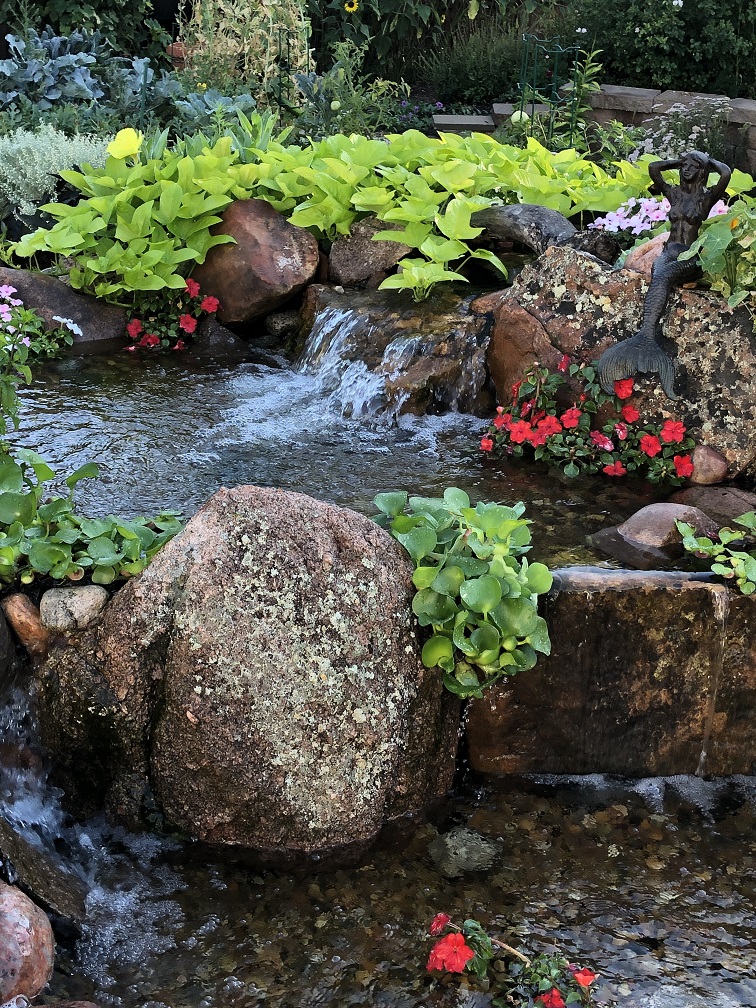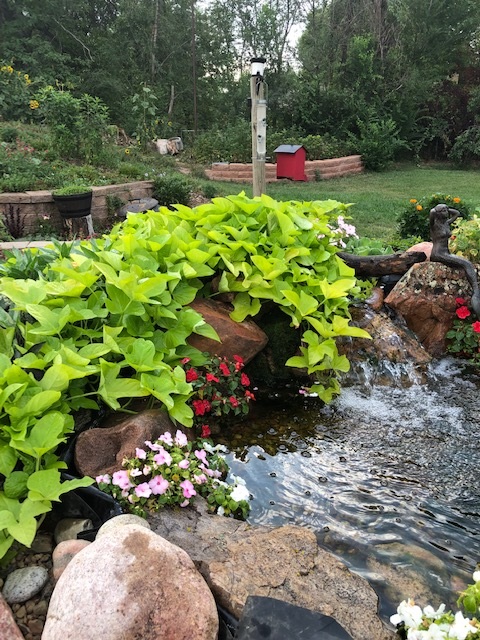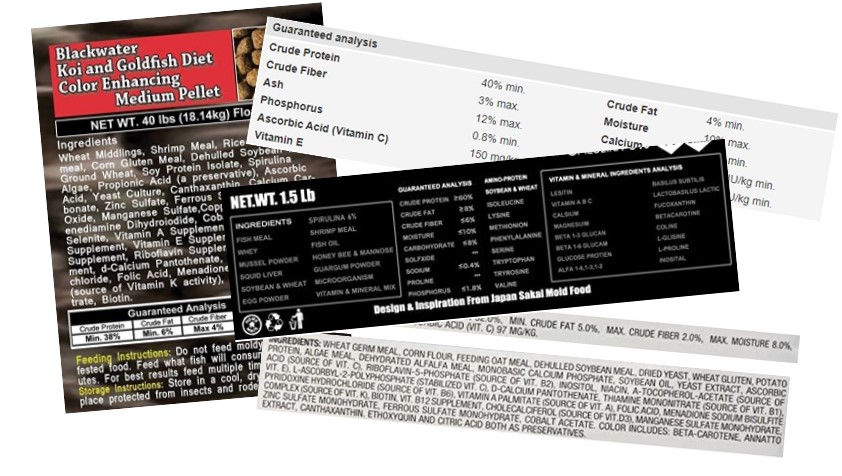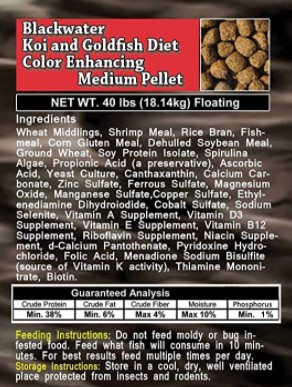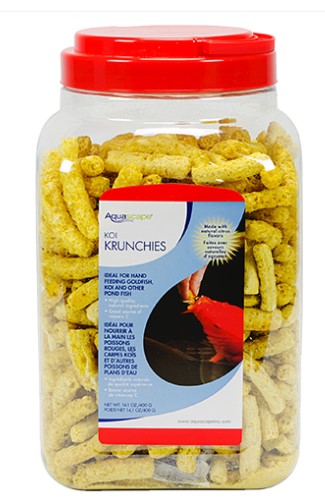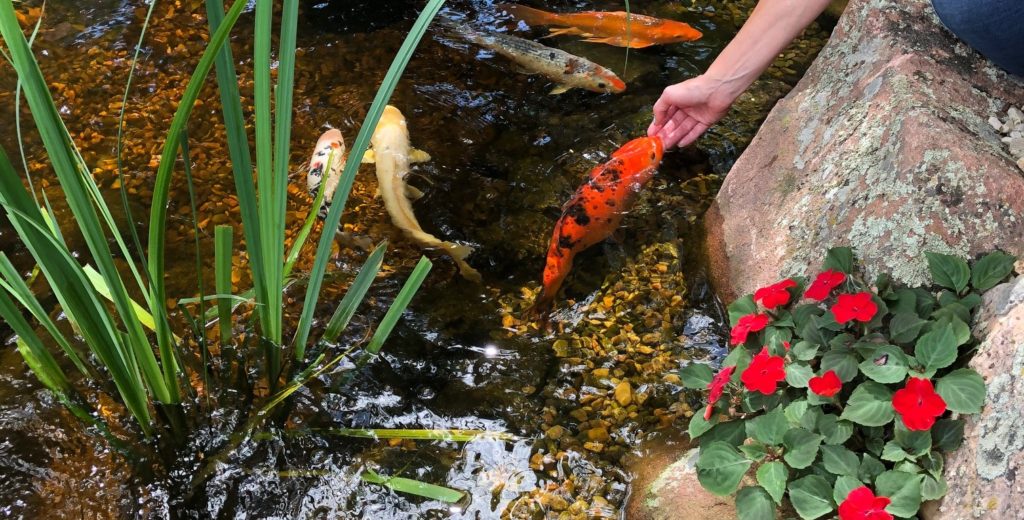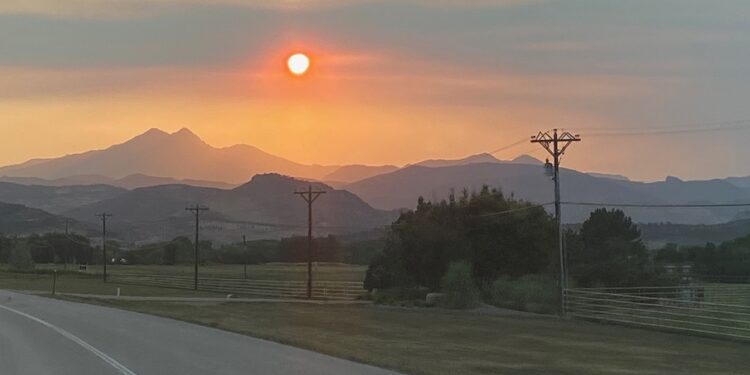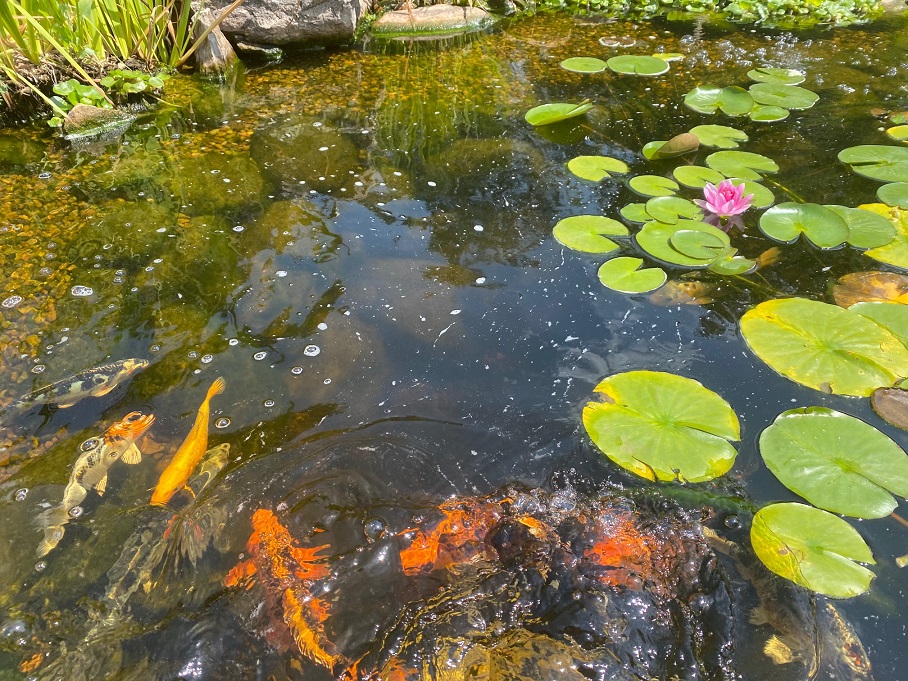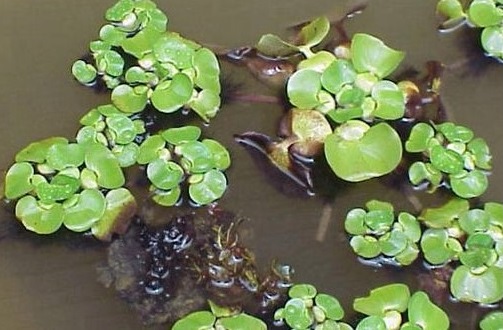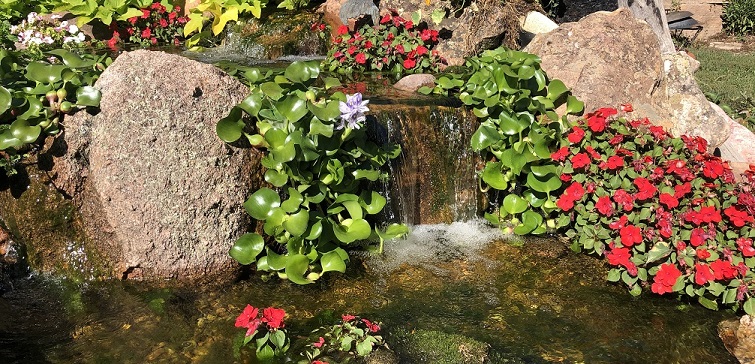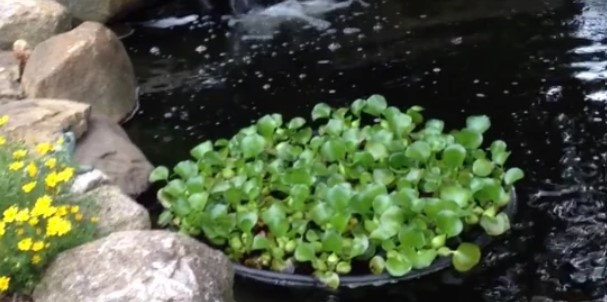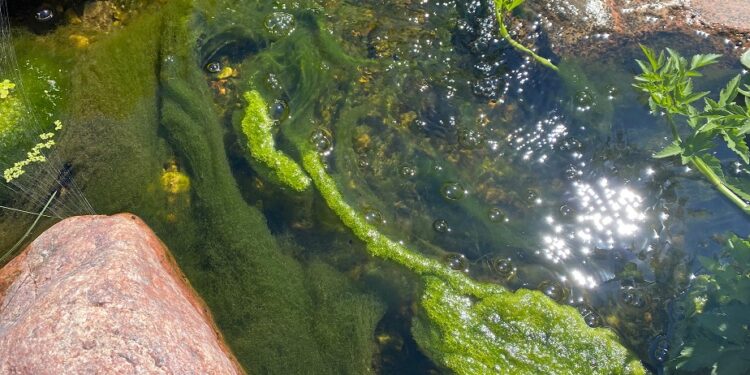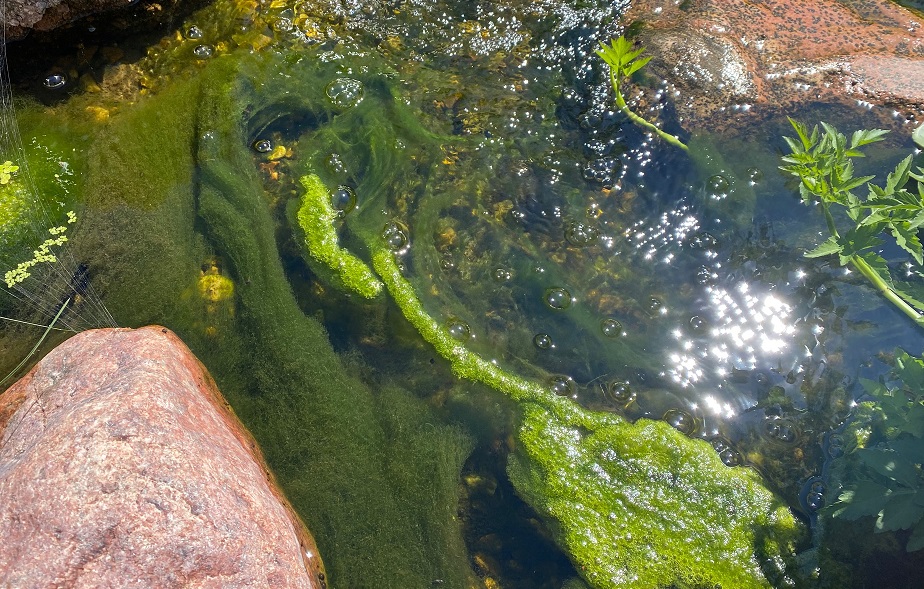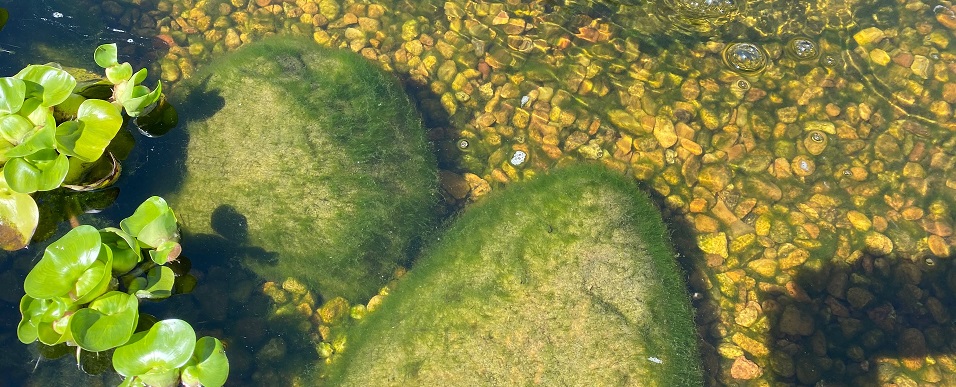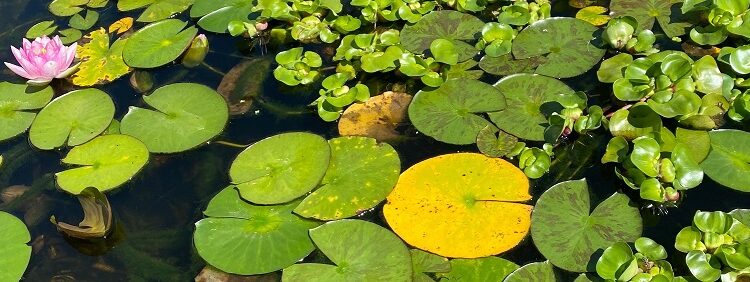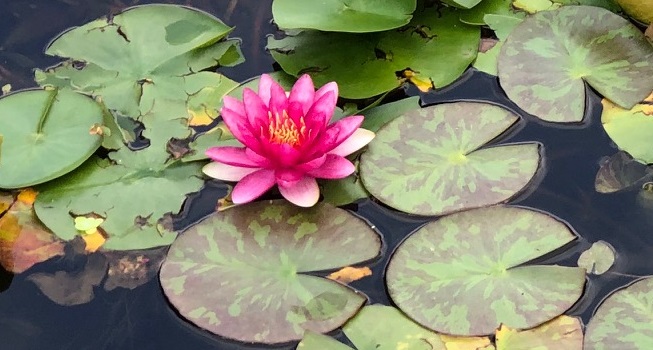Answer these 5 questions to find out if your backyard pond be run over the winter!
- Are there fish, frogs, and other aquatic life in or at the pond?
- Is the system currently free from any water loss (besides evaporation)?
- Are you going to be home this winter (not gallevanting around the world)?
- Is it easy to add water to the pond with a hose in the winter time if it is needed?
- Do you love the look of flowing water surrounded by billowy snow?
If you answered YES to all these questions:
Running your feature is the way to go!
- Once you decide to run the pump over the winter, make sure you run it continually all season long. Do not turn it off even if it gets really cold. Some people make the mistake of turning the pond pump off at night. This can be catastrophic during freezing temperatures. Moving water (i.e. the water in the pipes) won’t freeze as long as it keeps moving. If you have exposed pipes, the severe cold can cause freezing so covering or insulating them is a good idea.
- Running the pumps over the winter helps keep the fish healthy by circulating the oxygenated water. Fish go into a dormant state called “torpor” during the winter. While they are in this state they don’t need to eat and will hardly move at all. They may stay at the very bottom of the pond or in a fish cave where you can’t see them—this is the warmest place in the pond.
- Remember that if there is an air stone at the very deepest part of the pond it is bringing in the coldest air to the warmest place fish have. Place aerators on the higher shelves.
If you answered NO to any of these questions:
You may want to consider removing your pump for the winter.
- This might be a good decision if it is difficult for you to top off the water when it is needed and if you travel often.
- Also, if your system is losing water from the stream or waterfall and you are unable to remedy the issue, turning off the pump may help you get through the winter without worry over water loss.
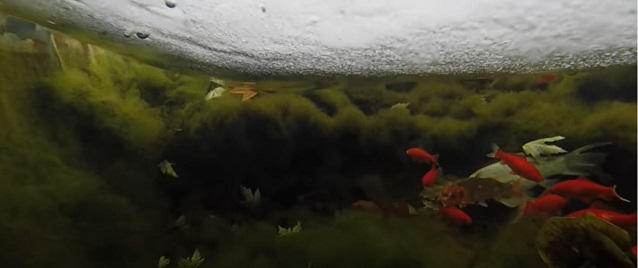
What if I have fish?
- If you have reasons to leave the pump off but there are fish, make sure that you have a floating de-icer to keep a hole open in the ice and aerators in the pond at an upper level. Although circulation is somewhat better, fish can overwinter without the pump running.
- We do not recommend running an in-pond pump that merely moves the water without sending it over a stream or waterfall. This does not oxygenate the water and does little more than mix up the warmest and coldest water in the pond.
To put it simply:
Running the pump = Great! But the pond still needs aerators and a de-icer.
NOT running the pump = That’s fine, too! But the pond needs aerators and a de-icer.
Kristi’s Pond Tips
![]() Plug the de-icer (heater) and aerators into a plug separate from the one the pump is plugged into. That way, if the GFCI pops and the pump goes out, the fish still have aeration and an open hole for gas exchange. If the de-icer and the aerators lose electricity you will have a little more time to rectify the situation because the pump is running, providing oxygen and hopefully keeping an area of ice open near the bottom of the waterfalls.
Plug the de-icer (heater) and aerators into a plug separate from the one the pump is plugged into. That way, if the GFCI pops and the pump goes out, the fish still have aeration and an open hole for gas exchange. If the de-icer and the aerators lose electricity you will have a little more time to rectify the situation because the pump is running, providing oxygen and hopefully keeping an area of ice open near the bottom of the waterfalls.
![]() If the skimmer has an adjustable skimmer door, put it at its lowest point over the winter. When the pond ices over, the liquid water level may decrease, starving your pump of water. (This keeps you from having to go out into the cold to lower the skimmer door.)
If the skimmer has an adjustable skimmer door, put it at its lowest point over the winter. When the pond ices over, the liquid water level may decrease, starving your pump of water. (This keeps you from having to go out into the cold to lower the skimmer door.)
![]() Keep a hose in the house (where it is warm) to use when you have to add water. This should not happen often, but when ice builds up water may need to be added. Remember: the hose must be detached from the spigot or it can freeze and cause a pipe break, potentially flooding your house!
Keep a hose in the house (where it is warm) to use when you have to add water. This should not happen often, but when ice builds up water may need to be added. Remember: the hose must be detached from the spigot or it can freeze and cause a pipe break, potentially flooding your house!
![]() Switch to cold water bacteria as the pond temperatures reach 50 degrees.
Switch to cold water bacteria as the pond temperatures reach 50 degrees.
![]() If winter pond care sounds like too much for you, call us! We offer winter pond care so you can keep cozy while the pond stays healthy.
If winter pond care sounds like too much for you, call us! We offer winter pond care so you can keep cozy while the pond stays healthy.
If you’re looking to install an outdoor water feature, we can help! Contact Colorado Pond Pros for residential and commercial installation, renovation, cleanouts, and repairs.Your content goes here. Edit or remove this text inline or in the module Content settings. You can also style every aspect of this content in the module Design settings and even apply custom CSS to this text in the module Advanced settings.


